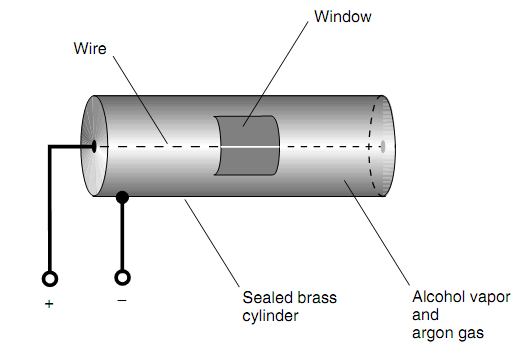Gamma (γ) Rays:
Since the wavelength of EM rays becomes shorter and shorter, their penetrating power rises until focusing is not possible. The cutoff point where the x-ray area ends and the gamma-ray area starts are around 0.01 nm (10-11 m). The Gamma rays can, in theory, get shorter than this lacking limit. The gamma categorization symbolizes the most energetic of all EM fields. The Short-wavelength gamma rays can penetrate some centimeters of solid lead or more than a meter of concrete. They are even much destructive to living tissue than x-rays. The Gamma rays come from radioactive materials, both natural (like radon) and human-made (like plutonium).
Radiation counters are the prime means of examining and detecting sources of gamma rays. The Gamma rays can dislodge particles from the nuclei of atoms they hit. Such subatomic particles can be noticed by a counter. One type of radiation counter contains a thin wire strung inside a sealed cylindrical metal tube filled with alcohol vapor and argon gas. Whenever a high-speed subatomic particle comes in the tube, the gas is ionized for an instant. The voltage is applied among the wire and the outer cylinder therefore a pulse of electric current takes place when the gas is ionized. Such a pulse generates a click in the output of an amplifier joined to the device.
The simplified diagram of a radiation counter is shown in figure below. A glass window with a metal sliding door is cut in the cylinder. The door can be opened to allow in particles of low energy and closed to permit only the most energetic particles to acquire inside. The high-speed subatomic particles, that are minute yet massive for their size, have no problem penetrating the window glass when they are moving fast adequate. Whenever the door is closed, gamma rays can penetrate it with easiness.

Figure: Simplified diagram of a radiation counter.